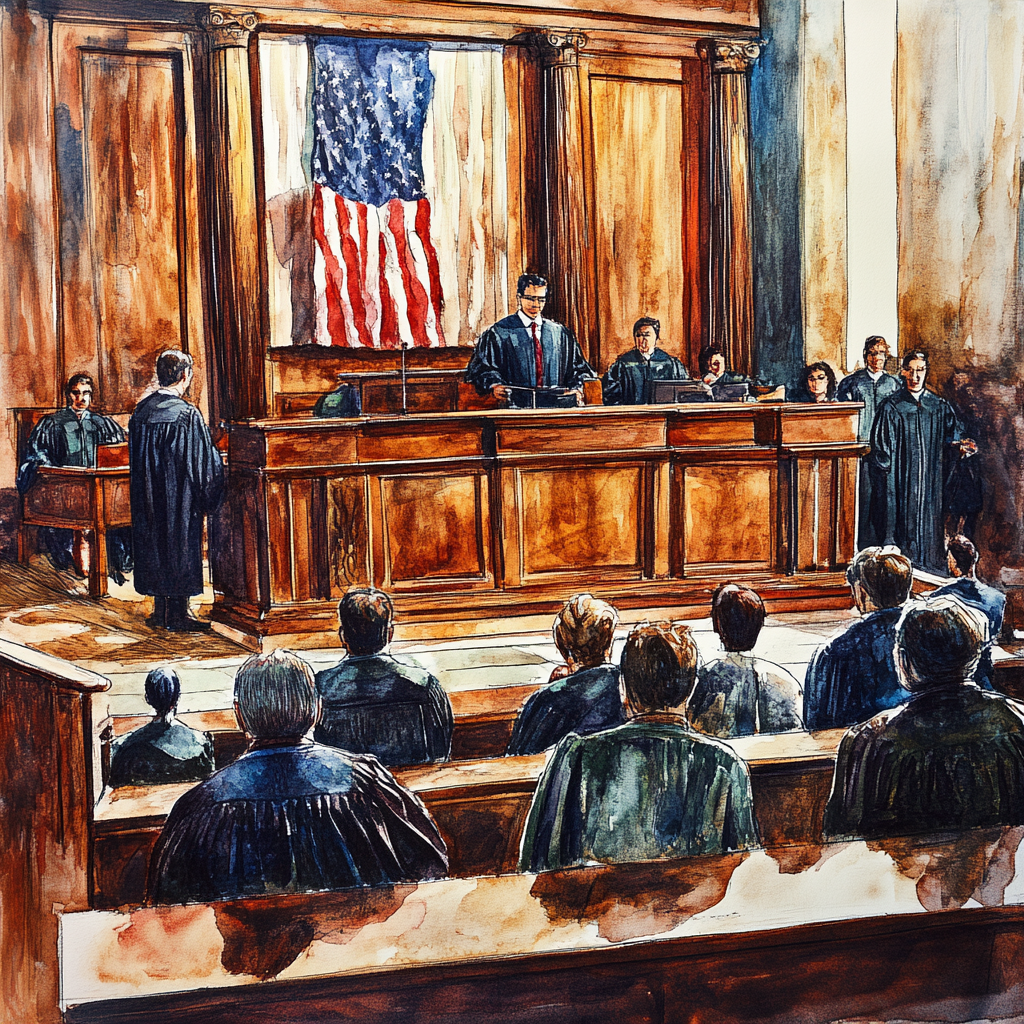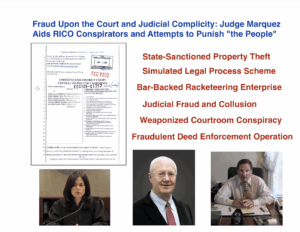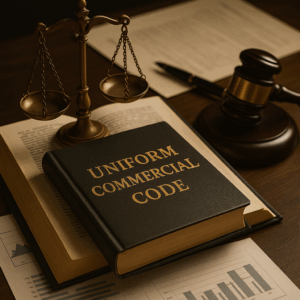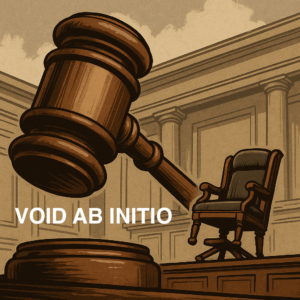The U.S. judicial system operates under a dual structure of federal and state courts, each with defined jurisdiction based on the U.S. Constitution and statutory law. This structure was codified under the Judicial Code of June 25, 1948 (62 Stat. 869). Below is an overview of the courts, their constitutional basis, and how different methods of pleading—pro se and sui juris, in propria persona—affect one’s standing.
Breakdown of Federal and State Courts
The chart below outlines the types of courts, their constitutional authority, their jurisdiction, and where a man or woman might stand when pleading pro se or sui juris.
| Court | Constitutional Article | Jurisdiction | Pleading Pro Se | Sui Juris, In Propria Persona |
|---|---|---|---|---|
| U.S. Supreme Court | Article III | Original: Disputes between states, cases involving foreign diplomats. | Treated as a litigant without legal counsel; formal rules apply. | Seen as asserting personal sovereignty and invoking common law principles. |
| Appellate: Constitutional and federal law issues appealed from lower courts. | ||||
| U.S. Courts of Appeals | Article III | Appellate review of federal district court decisions and agency rulings. | Must follow procedural rules; may face bias for lack of legal training. | Likely viewed as invoking rights outside statutory frameworks. |
| U.S. District Courts | Article III | Original: Federal cases involving statutes, diversity jurisdiction, and constitutional questions. | Treated as a pro se litigant within statutory framework; strict procedural rules. | May argue personal jurisdiction challenges or claim common-law standing. |
| U.S. Bankruptcy Courts | Article I | Exclusive jurisdiction over bankruptcy cases. | Seen as a debtor navigating statutory remedies. | Rare; may challenge jurisdiction or assert sovereignty over contracts. |
| U.S. Court of Federal Claims | Article I | Claims against the federal government, e.g., contracts, takings, tax refunds. | Must argue under statutory law; often requires extensive documentation. | May assert rights under the Constitution, common law, or equity principles. |
| U.S. Court of International Trade | Article III | Disputes about tariffs, trade agreements, and customs laws. | Limited scope for individual pro se cases. | Uncommon; may argue rights under natural or international law. |
| State Supreme Courts | State Constitutions | Final arbiter of state constitutional and legal issues. | Subject to state-specific procedural rules. | Treated similarly to pro se but may raise sovereignty arguments. |
| State Trial Courts | State Constitutions | General jurisdiction over civil, criminal, family law, and probate cases. | Pro se litigants handle local disputes but face challenges in complex cases. | Often assert personal jurisdiction challenges or invoke non-statutory rights. |
Understanding Pro Se vs. Sui Juris, In Propria Persona
Pro Se
- Definition: Latin for “on one’s own behalf.” This means representing oneself in court without an attorney.
- Implications:
- The court views a pro se litigant as subject to the same procedural and statutory rules as an attorney.
- The individual operates under the statutory jurisdiction of the court.
- Pro se litigants may face challenges due to their lack of familiarity with legal terminology and procedures.
Sui Juris, In Propria Persona
- Definition: Latin for “in one’s own right.” This implies acting as oneself, asserting sovereignty, and rejecting any imposed legal disabilities or presumptions.
- Implications:
- The individual asserts they are not a “person” as defined under statutory law but rather a living man or woman operating under common law or natural law principles.
- Such litigants may challenge the court’s jurisdiction, asserting it lacks authority over a man or woman who has not entered a voluntary contract.
- Courts may resist recognizing these arguments, often dismissing them as outside their jurisdictional scope unless explicitly tied to recognized legal doctrines.
Impact of Pleading Pro Se vs. Sui Juris in Court Setups
- Federal Courts:
- Pleading pro se places the individual squarely under the statutory jurisdiction of the court. This means compliance with the Federal Rules of Civil Procedure (FRCP) and other procedural laws is mandatory.
- Pleading sui juris often introduces arguments about personal sovereignty and jurisdiction, which federal courts may dismiss as “frivolous” unless tied to valid constitutional claims.
- State Courts:
- Specialized Courts:
- Courts like the U.S. Tax Court or Bankruptcy Court rarely entertain sui juris arguments due to their statutory nature. Pro se litigants must navigate complex procedural requirements.
Federal Courts
Federal courts derive their authority from the U.S. Constitution and federal statutes. They generally hear cases involving federal laws, constitutional issues, disputes between states, and specialized matters.
Article III Courts (Constitutional Courts)
These courts are created under Article III of the Constitution, with judges serving lifetime appointments and enjoying protections for their salaries. They exercise the full judicial power of the United States.
- U.S. Supreme Court
- Article: III
- Jurisdiction:
- Original Jurisdiction:
- Disputes between states.
- Cases involving foreign diplomats (Article III, Section 2).
- Appellate Jurisdiction:
- Appeals from federal Courts of Appeals.
- Appeals from state supreme courts involving federal law or constitutional issues.
- Original Jurisdiction:
- Role: The highest court in the United States, resolving critical constitutional and federal law questions.
- U.S. Courts of Appeals (Circuit Courts)
- Article: III
- Jurisdiction:
- Appellate review of decisions from U.S. District Courts.
- Appeals from federal administrative agencies (e.g., SEC, NLRB).
- Constitutional challenges to federal laws.
- Structure: 13 circuits, including the specialized Federal Circuit for patent law, trade disputes, and veterans’ claims.
- U.S. District Courts
- Article: III
- Jurisdiction:
- Original Jurisdiction over most federal cases.
- Handles civil and criminal cases arising under:
- Federal statutes.
- The U.S. Constitution.
- Specific Jurisdiction:
- Diversity jurisdiction (disputes between citizens of different states with amounts over $75,000).
- Admiralty and maritime law.
- Cases involving the federal government as a party.
- Role: Federal trial courts that serve as the primary venue for federal cases.
- U.S. Court of International Trade
- Article: III
- Jurisdiction:
- Disputes over international trade and customs laws.
- Cases involving tariffs, import/export regulations, and trade agreements.
Article I Courts (Legislative Courts)
These courts are created by Congress under Article I of the Constitution for specific purposes. Judges in these courts serve fixed terms and do not have lifetime tenure.
- U.S. Bankruptcy Courts
- Jurisdiction:
- Exclusive jurisdiction over bankruptcy cases under Title 11 of the U.S. Code.
- Includes liquidation (Chapter 7), reorganization (Chapter 11), and individual debt adjustments (Chapter 13).
- Jurisdiction:
- U.S. Tax Court
- Jurisdiction:
- Federal tax disputes between taxpayers and the IRS.
- Covers income, estate, and gift taxes.
- Jurisdiction:
- U.S. Court of Federal Claims
- Jurisdiction:
- Monetary claims against the federal government.
- Federal contract disputes, takings claims under the Fifth Amendment, and federal tax refund claims.
- Jurisdiction:
- U.S. Court of Appeals for Veterans Claims
- Jurisdiction:
- Appeals of decisions by the Board of Veterans’ Appeals regarding veterans’ benefits.
- Jurisdiction:
- U.S. Court of Appeals for the Armed Forces
- Jurisdiction:
- Appeals of military court-martial convictions under the Uniform Code of Military Justice (UCMJ).
- Jurisdiction:
Article IV Courts (Territorial Courts)
Created under Article IV, Section 3, these courts serve U.S. territories and handle both federal and local matters.
- Territorial Courts
- Jurisdiction:
- Federal and local issues in U.S. territories (e.g., Guam, U.S. Virgin Islands, Northern Mariana Islands).
- Jurisdiction:
Article II Tribunals (Executive Branch)
These tribunals operate under Article II powers, often addressing national security or military matters.
- Military Commissions
- Jurisdiction:
- War crimes, terrorism, and military-related offenses.
- Jurisdiction:
- Administrative Tribunals
- Examples:
- Immigration courts under the Department of Justice.
- Examples:
State Courts
State courts derive their authority from state constitutions and statutes, handling the majority of legal cases in the U.S.
- State Supreme Court
- Jurisdiction:
- Reviews decisions from state appellate courts.
- Resolves significant state constitutional and legal issues.
- Jurisdiction:
- State Intermediate Appellate Courts
- Jurisdiction:
- Reviews appeals from state trial courts.
- Jurisdiction:
- State Trial Courts (General Jurisdiction)
- Jurisdiction:
- Handles civil and criminal cases, including contract disputes, torts, family law, and probate matters.
- Jurisdiction:
- Specialized State Courts
- Jurisdiction:
- Family courts (e.g., divorce, custody).
- Probate courts (e.g., wills, estates).
- Small claims courts.
- Traffic courts.
- Jurisdiction:
Overlap of Federal and State Jurisdiction
Certain cases fall under concurrent jurisdiction, allowing either federal or state courts to hear the case. Examples include:
- Civil rights claims under federal statutes.
- Federal constitutional claims.
- Diversity jurisdiction cases exceeding $75,000.
While state courts have exclusive jurisdiction over family law and probate matters, federal courts retain exclusive jurisdiction over bankruptcy, patents, and federal crimes.
Key Points from the Judicial Code of 1948 (62 Stat. 869)
- Consolidated the jurisdictional structure of federal courts.
- Clarified distinctions between Article III constitutional courts and Article I legislative courts.
- Codified subject-matter jurisdiction under Title 28 of the U.S. Code.




